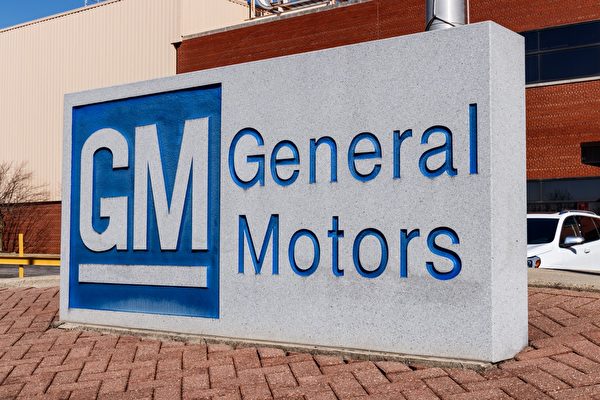Amid the tense geopolitical situation between the United States and China, shifting consumer confidence, and intensifying competition within industries on the Chinese mainland, American automakers like General Motors are rapidly losing market share in China, with General Motors witnessing a shocking decline in performance.
General Motors reported a loss of $106 million in the first quarter of this year in China, marking only the third quarterly loss in the past 15 years and the largest loss besides the impact of the COVID-19 pandemic lockdown.
The previous two quarterly losses due to the COVID-19 pandemic were $167 million in the first quarter of 2020 and $87 million in the second quarter of 2022.
With joint ventures included, General Motors’ market share in China has plummeted from about 15% in 2015 to 8.6% last year, dipping below 9% for the first time since 2003. Regulatory documents indicate that General Motors’ profits in its Chinese operations have declined by 78.5% since reaching their peak in 2014.
Sales of General Motors’ American brands such as Buick and Chevrolet have declined more than those of enterprises in joint ventures with SAIC and Wuling Motors. Approximately 60% of the 2.1 million vehicles sold by General Motors in China last year were models from joint ventures.
While these challenges are not unique to General Motors, the company has suffered the most losses after undergoing several restructurings and exiting other markets to enhance profitability.
According to CNBC, John Murphy, a top automotive analyst at Bank of America Securities, has repeatedly questioned General Motors during quarterly earnings conference calls about considering an exit from the Chinese market. In a recent statement, he queried, “Is it time to truly start considering strategic alternatives for possibly closing or selling the business in China?”
In response, General Motors’ CEO Mary Barra mentioned that new products would help the automaker better engage in market competition, including China’s so-called “new energy vehicles” like pure electric cars and plug-in hybrid cars. General Motors unveiled several models in China last week, including the plug-in hybrid version of the Buick GL8 minivan and the Chevrolet Equinox crossover.
Barra has been actively pulling out of unprofitable or underperforming markets over the past decade, but exiting the Chinese market is much more challenging than leaving other countries.
During the quarterly earnings conference call held on April 23, Barra stated that General Motors would remain committed to the Chinese market.
General Motors has witnessed a nearly decade-long decline in profits and market share in China, leading some industry observers to question whether the automaker can reverse its business situation or if exiting the Chinese market would be the best course of action.
Amidst increasingly fierce competition in the Chinese market, General Motors is shifting its focus from mainstream vehicles to luxury cars, marking a strategic change for the company. General Motors established a cultural community called “The Durant Guild” in 2022 to introduce its most iconic models to China, importing flagship models like the Hummer EV and other large SUVs.
However, China specialist and CEO of consulting firm Dunne Insights, Michael Dunne, believes it may be too late for the largest U.S. automaker in China.
As a former high-ranking executive of General Motors in Indonesia, Dunne told CNBC, “For the traditional American automakers in China, we are at the beginning of the end. For Detroit automakers in China, everything is moving in the wrong direction.”
Not only local Chinese automakers but also American competitors like Ford are chipping away at General Motors’ market share. Additionally, American electric vehicle leader Tesla, which saw a 32.4% sales decline in China from 2018 to 2022, is also making an impact.
According to Tesla’s annual regulatory filings, the company’s revenue in China surged by 57% last year to $21.74 billion. However, Tesla’s revenue in China for the first quarter of this year dropped by 6% compared to the same period last year, totaling $4.6 billion.
Considering the persistent supply chain challenges and geopolitical issues in China, automakers like Ford have shifted to an “asset-light” operating model, focusing on operational efficiency by reducing assets or better utilizing existing assets.
Ford no longer reports its financial performance by region, but its losses in China from 2017 to 2022 amount to around $5.5 billion.
After its joint venture with GAC Group in China filed for bankruptcy at the end of 2022, multinational automaker Stellantis also changed its strategy, opting for a “light asset” development approach.
Stellantis’ vehicle sales in China dropped from 124,000 in 2021 to 69,000 last year, representing a 44% decrease. The automaker did not disclose its financial performance in China. However, its adjusted revenue in the “China, India, and Asia Pacific region” last year fell by approximately 22% compared to 2022, resulting in a revenue decline of around €1 billion ($1.08 billion).

